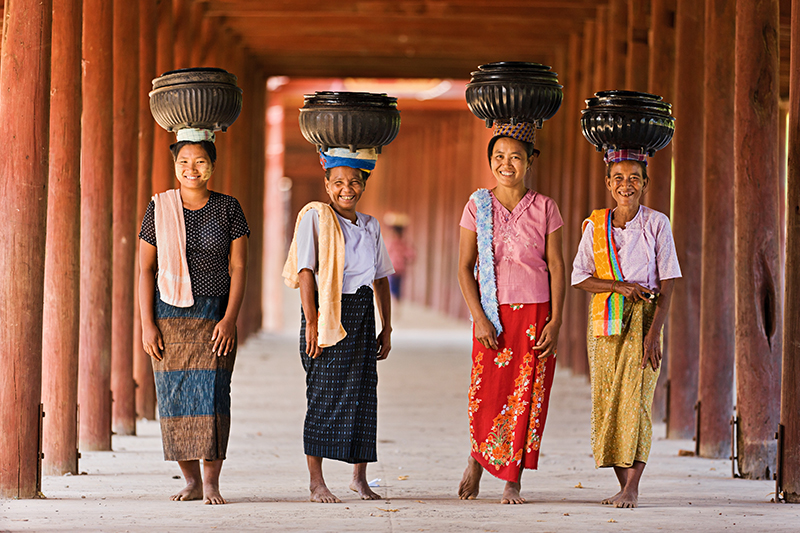
Myanmar People And Ethnology


A Small Talk about the Major National Ethnic Races in Myanmar
For instance, the Shan race covers 33 ethnic groups whose languages are different in at least four ways. Nonetheless, the majority of the ethnic Shan live in the Shan State, and the smaller communities of this ethnic race can also be traced in the Kachin state to the north. Most of the Shan group practices Theravada Buddhists. Please note that the Shan is the Myanmar’s largest minority with the estimated population of 3-4 million! Within the Shan State, there stand several other minorities such as Kokang, Palaung, Pao, Lahu, and Wa.
So, if you ask “Who are the Burma’s minorities?” our answer will point out the facts about Burma’s history regarding the Myanmar people and ethnology. With over 100 ethnic groups, Myanmar has the richest ethnic diversity in the Asian regions. The diversity has long been attributed by the country’s geographic locations that link with other neighboring powers like India, China, and Thailand. The cross-border migration and cultural mix has created the growth of ethnic communities in both mountainous frontier spaces and the lowland plains.
Though there are 135 “national races” officially recognized by the Burmese government, the reliable census data is still in vain. The races of Kachin, Kayah, Kayin, Chin, Mon, Bamar, Rakhine, and Shan are recognized because these minority groups did negotiate the state boundaries with the government in the past. Nevertheless, the groups themselves in the certain states are not ethnically homogenous.
With a population of 56 million, the local Burmese constitutes about two-thirds. Meanwhile, the Shan is the largest minority constituting 9 percent. About the rest of ethnicities like Mon, Rakhine, Chin, Kayan, Chinese, Indian, Palaung, etc., each constitutes around 5 percent or less of the population. See long-neck woman in Myanmar!
The Local People in Myanmar
They just come to attend the morning market to sell their products and buy some necessary things. Then, they leave the mainland and return to some hidden areas. That makes Myanmar the diverse land of ethnology because no one can exactly measure the number of ethnicities throughout the country. There stand several unrecognized ethnics who prefer residing in the far-off regions. The Myanmar exotic people and their special traditions shower Burma with lots of valuable traits for the newcomers to study and experience. The successful tours are always done in the harmonious land.
Contact Us
Information
WhatsApp : 09 250197881
info@myanmarphotographytour.com,
winthandarandassociatestravels@gmail.com
Travel Tips
- Embassies In Myanmar
- Arrival & Departure Procedure
- Myanmar Embassies Abroad
- Do & Don't
- Gazetted Holidays In Myanmar
- Life Style In Myanmar
- General information about Myanmar visa
- Travel Tips
- Our Services
- Naga History
We specialize in Myanmar also known as Burma because with our roots and our years (22 years travel industry )of experience.
